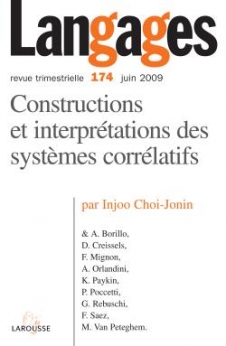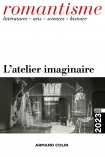
Langages n° 174 (2/2009)
Pour acheter ce numéro, contactez-nous
Recevez les numéros de l'année en cours et accédez à l'intégralité des articles en ligne.
Les phrases complexes à relative corrélative (PCRC), attestées dans des langues très variées, présentent une double corrélation : outre l’association reconnue depuis longtemps, et pour ainsi dire définitoire de ce type de phrases, d’un élément « wh- » dans la protase et d’un corrélat (nominal ou pronominal) dans l’apodose, il y a aussi une relation entre la protase entière et le corrélat, où les deux termes en corrélation sont en italiques, et où leur rapport sémantique est indiqué par les indices. Ces PCRC présentent des variations que je m’efforcerai d’identifier ici, tout en m’attachant aux propriétés spécifiques du basque navarro-labourdin. La structure interne des protases relatives (PR) sera examinée d’abord, puis celle, globale, de la PCRC.
Basque correlatives and the matrix clauses that contain them are systematically compared with their counterpart in various languages. The dimensions of cross-linguistic variation described are : (a) the paradigm the wh- items belong to (relative or interrogative ?), (b) their position in the protasis, (c) the various mechanisms that possibly mark the protasis as dependent, (d) the possibility of there being several wh- words or phrases ; but also (e) the option of having a linker between the correlative and the matrix, (f) the question of word order in the apodosis, and (g) what differences (if any) there are between such complex sentences according to the fact that the protasis contains a single wh- word or an NP modified by a wh- determiner.

